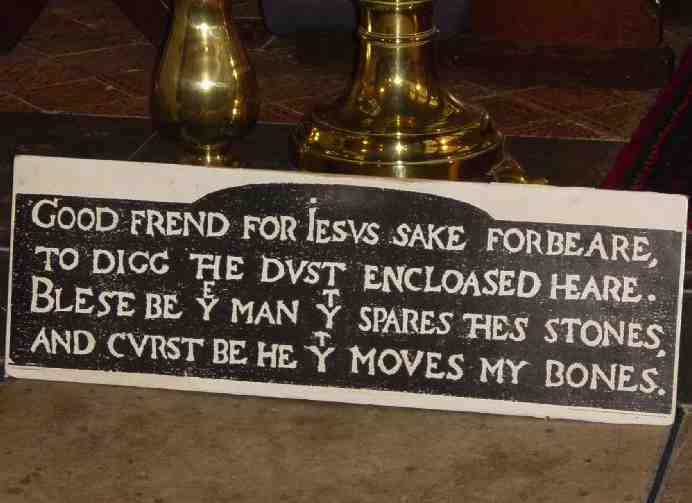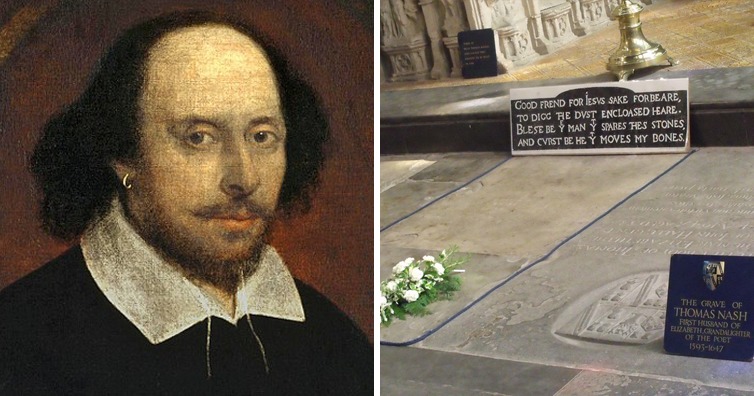It was not only the pharaohs who used to “seal” their graves with curses. This practice was also used in the West up until the 18th century and one notable example is the tomb of the most famous bard; William Shakespeare.
Located in Holy Trinity Church in Stratford-on-Avon, Warks, the place where he was baptised in 1564 and buried 52 years later, the grave of William Shakespeare is one of the most visited grave sites in the world.
Those visiting the tomb, will notice a sign on the grave that’s believed to be penned by Shakespeare himself. The inscription is in fact, a curse that reads: (the article continues after the ad)
Good friend for Jesus sake forbeare, To dig the dust enclosed here. Blessed be the man that spares these stones, And cursed be he that moves my bones.

So many people wonder, why did Shakespeare placed a curse on his grave?
In his book “Archaeologies of English Renaissance Literature” (Get it from Amazon![]() ) author Dr Philip Schwyzer explains that Shakespeare had an unusual obsession with burial and a fear of exhumation. Because during those times it wasn’t unusual for burial sites to exhume bodies in order to make room, Shakespeare, to avoid that happening to his own body, added this statement on his epitaph.
) author Dr Philip Schwyzer explains that Shakespeare had an unusual obsession with burial and a fear of exhumation. Because during those times it wasn’t unusual for burial sites to exhume bodies in order to make room, Shakespeare, to avoid that happening to his own body, added this statement on his epitaph.
Whatever the case, it seems that the inscription works. Even when the grave was revamped in 2008, architects and workers paid special attention not to move the bones and they actually conserved the gravestone.
The vicar of the Church, Rev Martin Gorick, said to BBC: “We are actually conserving the gravestone, so it should be a blessing rather than a curse.”
The grave was never opened and as it seems, it will remain untouched for years to come.
If you like what you read, then you will definitely love this one: This Is The Difference Between ‘Graveyard’ And ‘Cemetery’
Photo: Wikimedia, Elliott Brown / Flickr
Photoshop: I’m A Useless Info Junkie
Sources: Bard’s ‘cursed’ tomb is revamped | Grave curse shows Shakespeare’s fear for his bones



